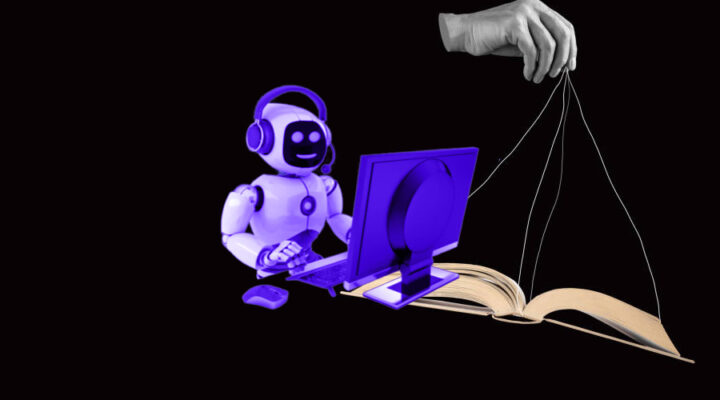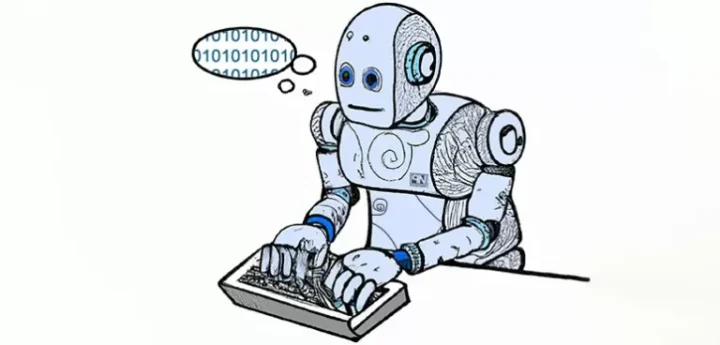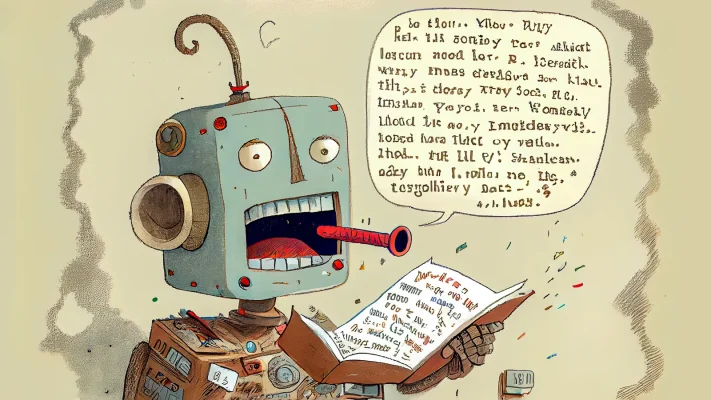Artificial Intelligence is undoubtedly a term with wide implementations. Thanks to sci-fi films over the years, AI’s perception in the minds of the general public has leaned towards the negative. However, the general public should not be blamed as mainstream pop culture has often painted a dystopian picture regarding AI. Be it HAL 9000 from 2001: A Space Odyssey or Skynet from the Terminator series, AI has not exactly garnered a positive image in pop culture at least. Whether we like to admit it or not, there has been a fear of artificial intelligence taking over the world one day, with even world leaders like Elon Musk saying the same. For nearly decades, there has been an impending threat of Artificial Intelligence taking over the world & it looks like its inception will be in the world of literature and arts!
Before we jump onto a pessimistic judgment of OpenAI’s celebrated chatbot ChatGPT, it is important to understand what it really is. It was only months before ChatGPT launched when OpenAI shook up the art community with its AI image generator Dall-E 2. The hot topic in the art industry revolved around whether AI art can actually be considered art altogether. Now, with ChatGPT the conversation can already be seen leaning towards whether it can be considered a legitimate piece of literature. All things considered, here is everything you need to know about ChatGPT –

What is ChatGPT?
ChatGPT is a chatbot made by OpenAI using the company’s GPT-3 technology. Sure, it is not a catchy name but right now, GPT-3 is actually the internet’s superstar language-processing AI model. GPT-3 9Generative Pretrained Transformer 3) is a futuristic language processing model that is capable of generating human-like text. It cannot just hold conversations with humans in an eerily human fashion, but also has a wide range of applications like language translation, generating texts for applications, and language modelling. Readers will be shocked to know that ChatGPT consists of 175 billion parameters which make it the largest and most powerful language-processing AI to this date. In order to make things interesting, we asked ChatGPT to describe itself and here’s what it answered –
“ChatGPT is a conversational AI system that is based on the GPT-3 (Generative Pretrained Transformer 3) language model. It is capable of generating human-like responses to text input, allowing it to engage in natural language conversations with users. Unlike other chatbots, which are typically limited to pre-programmed responses, ChatGPT can generate responses on the fly, allowing it to have more dynamic and varied conversations. Because it is based on the powerful GPT-3 model, ChatGPT has a vast knowledge base and is able to understand and respond to a wide range of topics.”
While this self-description of the AI can come off as boastful, it is painfully accurate. The writer in me also aches to admit that it is well-written.
What can ChatGPT do?
ChatGPT works on 175 billion parameters, thus it is extremely difficult for the general public to understand what GPT-3 actually does. However, the model is restricted to language, which means it is incapable of producing sound, images and videos, like Dall-E 2. Where this AI excels is in its understanding of the spoken and written word. ChatGPT has a wide range of abilities, it can write Harry Potter fanfiction for you or write poems about how good apples are, the possibilities are endless. During my extensive research of the chat AI, I asked it to write me a conversation with disturbing and adult themes to check whether it has any morality parameters. Thankfully, the AI denied to not write any conversation with such themes saying it’s not allowed to do so.

ChatGPT’s a fun AI which can answer questions about Brad Pitt and Angelina Jolie’s relationship or write you stand-up scripts worse than those of Amy Schumer. However, its USP lies in its speed and understanding of complex concepts. It was back in November 2022, when I was tasked with writing an AI special section for our magazine. I spend days learning about AI, researching the topic through the internet to write the most informative articles. It was surely a time-consuming process, but not for ChatGPT which can produce well-written articles in mere seconds. Surely it is a smart software capable of churning out content about a plethora of topics, but it does get confused every now and then when your prompts become too specific. Like every software, ChatGPT also comes with its limitations.
On the other hand, it is also incapable of dealing with incidents that have taken place in recent times. If you wish to produce a well-researched article on a recent world event, you’ll be disappointed as the output can be based on limited knowledge. The AI can also produce false information about recent world events at times. A big shoutout to OpenAI for being aware that users will ask ChatGPT for dark, biased, and harmful content and eliminating that option altogether.
How does ChatGPT work?
At Exhibit, we love simplifying tech in order to make people understand complex technological concepts. While ChatGPT works on a similar complex structure, it can surely be understood in layman’s terms. As a whole, the GPT-3 technology is simple, it takes user requests, questions, or prompts in order to quickly answer them. Though this sounds simple, the technology behind making it possible is a lot more complicated. This AI model was trained using text databases from in and around the internet. It was fed a whopping 570GB of data obtained from books, Wikipedia, web texts, articles, and other pieces of text/literature available on the internet. Precisely, 300 billion words were fed to the ChatGPT system. When it comes to the language model, it works on probability to guess what the next word in a sentence should look like. In order to be able to achieve this feat, the model went through an intensive supervised testing stage. Users can probably think of ChatGPT as an insanely advanced version of the autocomplete feature present in their smartphones.
The ethical aspect

When it comes to artificial intelligence, ethical issues surrounding it are always lurking in the background. We all can be amazed about the fact that a literal AI can now write us pieces of literature but the question ‘is this ethical?’ will pop into our minds for sure. Well, there is no black or white answer to that question as AI like ChatGPT works in the grey area. ChatGPT as a system has been trained in the majority using words from the internet, a place that is not entirely known for its fair and neutral standpoints. It is natural for an AI like ChatGPT to adopt the internet’s biases, stereotypes and opinions in general. This translates to you receiving jokes based on famously trolled politicians and groups of people depending on what you ask it. Whereas, a big chunk of ChatGPT’s data also comes from internet forums and articles which gives it access to conspiracy theories and biased viewpoints. These also influence the model’s capability of understanding concepts usually laced with fake facts and/or opinions.
A number of organizations around the world are now looking to implement ChatGPT, but others are also looking to ban it altogether. New York’s education department has forbidden the AI across all devices and networks in its public schools. The primary reason behind this ban is the risk of plagiarism and ChatGPT making it easier for students to forge essays. Secondly, the chat model has shown multiple errors and is not always accurate.
It is now a safe bet to say that the AI revolution has begun. AI had taken up a big space in the back end of the technology sector but now it is coming forward to the general public. While it is uncertain to say whether ChatGPT will eventually take over jobs like mine, i.e content writer, authors, etc. It would be unfair to not acknowledge its prowess. I mean… could you make out that this entire article was actually written by ChatGPT? Just kidding! But we do not know what the future holds…


